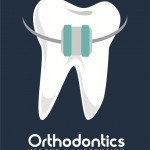
The prevalence of class III malocclusions is said to vary from 5% in Caucasians to about 23% in Asian populations. Chin-cup, face mask, maxillary protraction combined with chin-cup, and the Fränkel functional regulator III appliance have all been used for the treatment of class III malocclusion and studies has suggested conflicting results regarding the outcomes and outcome measures of chin-cup therapy. The impact of the chin-cap appliance on temporomandibular disorders (TMD) is one area of discussion. The aim of this was, therefore, to assess the available evidence for the influence of chin-cup therapy on the temporomandibular joint (TMJ) regarding morphological adaptation and appearance of TMD.
Methods
Searches were conducted in Medline/PubMed, Embase, the Cochrane Oral Health Group’s Trials Register, CENTRAL, ClinicalTrials.gov, the National Research Register, and Pro-Quest Dissertation Abstracts and Thesis database. Prospective and retrospective studies, including randomized clinical trials(RCTs), controlled clinical trials, and other observational studies were considered in this review. Studies with or without auxiliaries, such as lingual arches or other intraoral mechanotherapies that had outcomes including morphological adaptations of the TMJ, changes of the condylar configuration, dysfunctions caused by the chin-cup therapy, and incidence and types of TMD were included. Study selection, data abstraction a quality assessment was carried out independently by two reviewers.
Results
- 12 studies were included
- 8 were prospective, 4 retrospective. There were no RCTs.
- One of the prospective studies was considered to be at low risk of bias.
- 5 studies considered chin-cup influence on craniofacial structures and condylar shape
- 7 studies considered chin-cup influence on TMD
- A qualitative summary of the studies was presented. This suggests that
- chin-cup therapy affects the condylar growth pattern, even though two studies reported no significance changes in disc position and arthrosis configuration
- chin-cup therapy constitutes no risk factor for TMD.
Conclusions
The authors concluded
Based on the available evidence, chin-cup therapy for Class III orthodontic anomaly seems to induce craniofacial adaptations. Nevertheless, there are insufficient or low-quality data in the orthodontic literature to allow the formulation of clear statements regarding the influence of chin-cup treatment on the temporomandibular joint.
Commentary
The 2013 Cochrane review by Watkinson et al identified 2 RCTs with evidence showing that ‘the use of a chin cup led to statistically significant benefit in ANB when compared to an untreated control’ however these were short term studies. This new review focuses in on positive and negative effects of the TMJ. While methodologically well conducted as the authors note there is limited high quality evidence available so the findings should be interpreted with caution.
Links
Zurfluh MA, Kloukos D, Patcas R, Eliades T. Effect of chin-cup treatment on the temporomandibular joint: a systematic review. Eur J Orthod. 2014 Sep 1. pii: cju048. [Epub ahead of print] Review. PubMed PMID: 25179261.
Watkinson S, Harrison JE, Furness S, Worthington HV. Orthodontic treatment for prominent lower front teeth (Class III malocclusion) in children. Cochrane Database of Systematic Reviews 2013, Issue 9. Art. No.: CD003451. DOI: 10.1002/14651858.CD003451.pub2.

Don’t miss: Chin cup treatment for class III maloclussions & impact on temporomandibular joint http://t.co/XCOwLeLuDT
DTM >> Chin cup treatment for class III maloclussions – The Dental Elf http://t.co/tV5tUeuglh, see more http://t.co/2NAig7mWWR